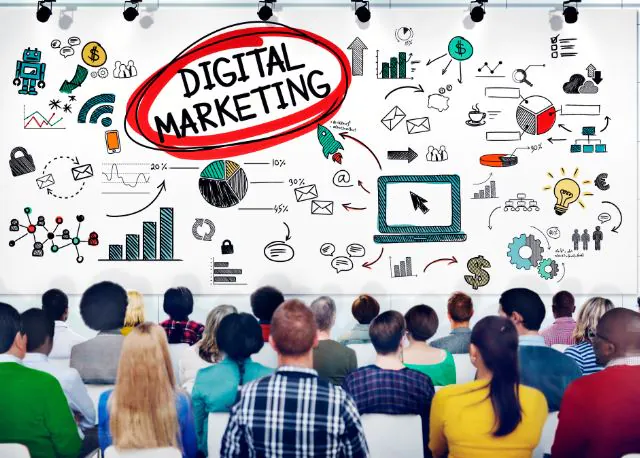Purchasing and procurement are critical functions in organizations, each serving distinct roles in acquiring goods and services. Purchasing focuses on the transactional elements, such as order placement and price negotiation, while procurement encompasses a broader strategic approach, including supplier selection and contract management. Recognizing their differences is essential for organizations to leverage these processes effectively. As businesses increasingly acknowledge the strategic importance of purchasing and procurement, they can enhance quality, foster innovation, improve efficiency, and achieve cost savings. Understanding these functions allows organizations to optimize their operations and drive overall success.
What’s the Difference between Purchasing and Procurement?

| Aspect | Procurement | Purchasing |
|---|---|---|
| Definition | Strategic process of sourcing and acquiring goods and services. | Transactional activity of buying goods and services. |
| Scope | Encompasses the entire process including needs identification, sourcing, and contract management. | Focuses on specific tasks like ordering, receiving, and payment. |
| Goals | Aims for long-term value creation and strategic outcomes. | Concentrates on short-term goals like cost control and immediate needs. |
| Approach | Proactive; anticipates needs and builds supplier relationships. | Reactive; responds to immediate requirements. |
| Decision Making | Involves comprehensive analysis and strategic decisions across departments. | Primarily concerned with fulfilling immediate purchasing needs efficiently. |
| Vendor Relationship | Focuses on building long-term partnerships and collaboration with suppliers. | Transactional; emphasizes completing contracts rather than relationship building. |
| Risk Management | Considers broad risks including market changes and compliance issues. | Addresses operational risks related to delivery and payment processes. |
| Process Duration | Ongoing, cyclical process requiring continuous assessment. | Shorter, task-specific cycle concluding after receipt and payment. |
| Key Activities | Includes need recognition, sourcing, negotiation, and supplier management. | Involves obtaining requisitions, issuing orders, and processing payments. |
This table highlights the fundamental differences between procurement and purchasing, illustrating how they function within an organization while emphasizing their distinct roles in the acquisition of goods and services.
Unlocking Procurement Efficiency: The Key to Cost-Effective Success!
Procurement efficiency refers to an organization’s ability to acquire goods and services in a cost-effective manner while optimizing the procurement process. It encompasses several key aspects:
-
Cost Management:
Efficient procurement minimizes costs by identifying the right suppliers and negotiating favorable terms, thereby directly impacting the organization's bottom line.
-
Process Optimization:
Streamlining procurement processes through automation and technology reduces cycle times, enhances productivity, and minimizes errors, leading to faster and more accurate outcomes.
-
Supplier Relationship Management:
Building strong partnerships with suppliers fosters collaboration, improving pricing, quality, and delivery times, which enhances overall procurement efficiency.
-
Data-Driven Decision Making:
Utilizing analytics allows organizations to predict demand and optimize inventory levels, enabling informed purchasing decisions that contribute to efficiency.
-
Strategic Alignment:
Aligning procurement activities with organizational goals ensures that resources are acquired in a manner that supports long-term success, ultimately leading to improved operational effectiveness.
In summary, procurement efficiency is crucial for enhancing an organization’s operational capabilities and achieving sustainable growth.
Importance of Purchasing and Procurement Process for Organizations
Purchasing and procurement are vital processes for organizations, influencing various aspects of operations and overall success. Here’s a concise explanation of their importance:
Improve Quality
Purchasing and procurement departments establish performance standards for quality, enabling them to monitor products against criteria like durability and delivery timelines. Collaborating with vendors to enhance processes ensures that quality is consistently maintained throughout the supply chain.
Pursue Innovation
Being in constant contact with diverse suppliers, purchasing and procurement teams are well-positioned to identify and source innovative products and services. This strategic sourcing fosters a competitive advantage in terms of price, quality, and convenience, driving organizational growth.
Increase Efficiency
When strategically implemented, the purchasing and procurement processes can significantly enhance operational efficiency. An optimized approach improves sourcing capabilities and ensures timely delivery of goods and services, ultimately streamlining organizational workflows.
Achieve Savings
Effective management of purchasing and procurement has a direct impact on an organization’s bottom line. By negotiating favorable prices for goods, services, and contracts, these departments can realize immediate cost savings that contribute to overall financial health.
To further enhance your organization’s purchasing and procurement strategies, take the first step towards operational excellence! To explore innovative solutions that streamline your processes and drive sustainable growth,
How Automation Improves Procurement Efficiency
Procurement automation significantly enhances efficiency by streamlining manual processes and reducing the time spent on repetitive tasks. By digitizing workflows such as purchase requisitions, invoice processing, and supplier management, organizations can minimize errors and accelerate decision-making, allowing teams to focus on strategic initiatives rather than administrative burdens.
Automation helps organizations negotiate better supplier terms and consolidate purchasing, leading to reduced processing costs and improved financial performance.
By eliminating manual tasks, procurement teams can redirect their efforts toward strategic activities like supplier relationship management and contract negotiation, enhancing overall productivity.
Automated systems reduce the risk of human errors in data entry and processing, ensuring compliance with organizational policies and regulatory requirements.
Automation accelerates approval workflows and improves the overall speed of the procure-to-pay process, resulting in shorter procurement cycles.
With centralized data management, procurement teams can easily access supplier information, fostering better communication and collaboration with vendors.
Incorporating automation into procurement processes is essential for organizations aiming to improve efficiency and effectiveness. By leveraging technology, businesses can streamline operations, reduce costs, and enhance their overall procurement strategy, ultimately driving greater organizational success.
Conclusion
The purchasing and procurement processes are essential for enhancing business efficacy. By ensuring high-quality products and services, these functions help organizations maintain standards that meet customer expectations. Moreover, they foster innovation by connecting businesses with cutting-edge solutions, providing a competitive edge in the market. Streamlined procurement processes increase operational efficiency, minimizing delays and optimizing resource allocation. Additionally, effective purchasing strategies lead to significant cost savings, directly impacting the bottom line. Collectively, these elements underscore the strategic importance of purchasing and procurement in driving organizational success and sustainability.
Transform your organization’s potential today! Discover innovative purchasing and procurement strategies that drive efficiency and spark growth—for tailored solutions that make a difference,




